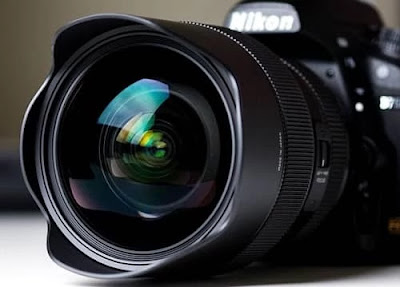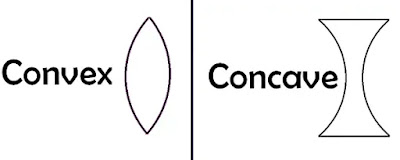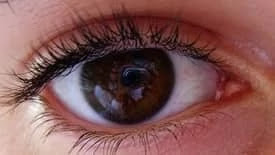We know about diffraction and examples of refraction as well but what if I asked, “What are the examples of refraction on the spherical surface?”
Examples of refraction:
1. Camera
2. Eyes
3. Water droplets
4. Binocular
5. Light refracting from a water glass
6. Microscope
7. Telescope
8. Glass
9.. Contact lens
10. Seeing a glass through fishbowl
To know more about how the this thing can be the example of refraction on the spherical surface and what is refraction on spherical surface read further.
Table of Contents
Examples of refraction on a spherical surface:
What is refraction ?
When a light wave travels from one medium to another medium the wave of light gets dispersed after entering the second medium and this phenomena of dispersion of light which travels from one medium to another is called refraction.
P.s: Medium refers to space where light waves travel. Different medium has a different intensity and therefore when a light wave enters into a second medium with high or low density, light waves get dispersed.
Refraction on a spherical surface:
When light enters from one transparent medium to another transparent medium, due to change in density of both the medium, light gets dispersed depending upon whether light is travelling from denser medium to normal medium or from normal medium to denser medium and this decides dispersion of light wave.
So now you know why dispersion happens when light travels from one medium to another. Well, let’s understand what happens when refraction takes place on a spherical surface. Don’t worry I am only going to give you a basic understanding and will not go in deep mathematical derivation of this 🙂
 |
| Refraction on a spherical surface when a light wave is at an angle |
So in the above line, you can see how light waves change direction after entering the second medium and gets dispersed. Well, you will notice that light waves enter from the first medium into the second medium from a different direction and after entering the medium they get dispersed and path of light waves change. Due to this now, in second medium, light waves are actually travelling in a straight path. Well, what will happen if light waves travel on a straight path enter spherical surface ? Let understand this as well.
 |
| Refraction on a spherical surface when the light wave is straight |
Well, you can see that we are seeing somewhat opposite then another example. When a light wave travels in the straight path and gets refracted, they get dispersed and after dispersion, they start travelling at some angle the same as shown in the figure.
So now you know about refraction and what happens to lightwave and how they get dispersed when enters through the spherical surface. So here are the 10 examples of Refraction of light on a spherical surface.
Examples of refraction on spherical surface:
1. Camera:
If you own a DSLR then it’s pretty easy for you to understand. Well, camera lens which we use on our DSLR or even camera lens in our smartphones cameras is spherical in shape. You all know the importance of a camera lens to take a good picture.
 |
| Camera lens |
When you take pictures of something, light waves are refracted from the object and enters your camera by passing through the camera lens.
Here you will notice that when light passes through camera lens medium of light waves changes from air to the dense medium of a lens and that the reason when light enters in the camera through a lens, the light waves refract.
Straight light from a source gets reflected and enters into the camera after getting refracted through the camera lens and this camera lens focuses all the light to one point just as shown above, when straight light gets refracted through the spherical surface.
2. Binocular:
Just like in the case of a camera lens, it kinda goes the same for binoculars as well. Binoculars help us to have a closer look at an object which is far. Well, the principle used in binocular is also the same.
Light is reflected from an object and with the help of spherical lens present inside a binocular, we can have a closer look of an object.
Light waves travel straight after getting reflected from the source and enters in our eyes through refracting spherical surface. Due to refraction, the light waves are dispersed and because they were travelling in a straight line after refraction all the light waves gather at one single point due to dispersion and this is why we can get a better look of far objects with the help of binocular.
3. Light refracting from a glass bowl or a glass:
Well, let’s do an experiment take a glass bowl or glass from your kitchen and fill it with water and now try seeing through it. You will see something like this:
 |
| Refraction through a glass of water |
Well, an object in the glass or bowl will look that it’s big and closer. This effect is due to refraction. Light passes through a bowl and it gets dispersed therefore it looks like its bigger and closer inside water.
4. Microscope:
Well lens used in microscopes is a convex lens
 |
| Convex lens |
5. Telescope:
A telescope is used to see objects in space. Lens present in a telescope is spherical in shape and when a light wave enters in telescope before entering our eyes it gets refracted.
Two types of lens are used in a telescope. 1. Concave and 2. Convex
 |
| Shape of a convex and concave lens |
6. Glass:
Well, Glass in our kitchen is spherical in shape if we watch it through a particular angle. A glass full of water also refracts light waves. When a light wave enters in a glass it gets dispersed and refracts.
This is the reason why an object present inside a glass of water looks big and close.
7. Contact lens:
Many of us don’t like to wear those big-big eyeglasses and therefore some people prefer to wear contact lenses. Contact lenses is also spherical shape just like our eyes so that it can fit.
When a person with contact lenses views something, light enters in his/her eyes after passing and refracting through the contact lens.
These lenses are designed according to the patient’s eye so that after getting dispersed and refracted a person can see clearly.
8. Seeing a fish through a fishbowl:
Well if you own a fish at your home, then fish actually look bigger and closer when viewed from side compare to when viewed from the top. Even in an aquarium, you will notice the same thing.
Well, it’s because before the light enters in our eyes it gets refracted due to change of medium from water to air. This is the same reason why an object through a glass bowl and a glass full of water seems bigger.
9. Eyes:
 |
| Eye |
The human eye is a great example of refraction through a spherical object. If you look closely in the mirror you will notice that eye is actually spherical in shape and that’s the reason behind contact lens been spherical so that it can fit properly.
So whenever we see something even now while you are reading this light enters in your eyes after getting refracted through outer layer of the eye.
Light gets reflected from an object and enters in our eye where it gets refracted due to change of medium of a light wave from air to medium inside eyes. After dispersion and refraction, it enters in our eye where brain processes all the data it gets from light and we see a whole clear image of what is present in front of us.
This whole process occurs so fast that we are not even able to realise it.
10. Water droplets:
 |
| Rainbow formation due to water droplets |




